|
Philharmonic
Daughters and
Secret Histories William Osborne December 30, 2012
The last year has brought some small but significant new developments to both the Vienna State Opera Orchestra and its symphonic formation, the Vienna Philharmonic. Ursula Wex, who was hired by the Opera Orchestra in 2003, has been admitted to the Philharmonic. Her tenure period should have been three years, but was extended to nine due to maternity leaves. Her admission raises the total number of women in the Philharmonic to 7 among 126 tenured positions -- which is 5.5% of the personnel.[1] In addition, the State Opera Orchestra has hired three new women in 2011-12: harpist Anneleen Lenaerts, violinist Patricia Koll, and flutist Karin Bonelli. This raises the total number of women in the Staatsoper Orchestra to 10 among 146 positions -- which is 6.84% of the personnel.[2] If these three new women pass their trial year in the Staatsoper orchestra, they will be included in the orchestra’s Philharmonic formation after completing a tenure period that is normally three years. In addition to these developments, the Philharmonic recently opened its archives. This has led to a new book about the orchestra’s Nazi past, and some controversy about the orchestra’s willingness to discuss its history during the Third Reich. The seven women members of the Philharmonic are pictured below, along with their instrument and year of membership.
And here are the three new women members who joined the Staatsoper Orchestra in 2011-12:
A
Father-Daughter Tradition Patricia
Koll’s employment by the Staatsoper in February 2012 is one of the
most important to date for women in the orchestra for three reasons. First,
she is the only Austrian woman the orchestra has hired in the last nine
years – excluding oboist Helene Kenyeri who
was fired. Second, Ms. Koll
is the first woman to be hired who was born, raised, and educated in
The
third and perhaps most important reason is that her father, Heinrich
Koll,
(pictured below with his daughter) is
one of the orchestra’s solo-violists.
The Vienna Philharmonic has a history extending back to the 19th
century of hiring the sons of Philharmonic members.
The orchestra feels these father/son relationships have helped
maintain the orchestra’s traditions.[3]
Patricia Koll is the first The
employment of flutist Karin Bonelli is also significant.
She is only the second woman wind player hired by the orchestra.
(The first was oboist Helene Kenyeri who was won her audition in
2007 but did not pass her trial year.) The 24 year-old Ms. Bonelli, who
studied at the It is thus notable that over the last 15 years, the Vienna Philharmonic has seen an increase in the number of foreigners it has hired, especially in key positions. All three of the orchestra’s previous solo-cellists, for example, have recently retired. All three were Austrian and all three were replaced by Hungarians. In another key position, the new concertmaster, Albena Danialova, is Bulgarian. Only four of the ten women in the Staatsoper Orchestra are Austrians. The other six include two Bulgarians and one each who is German, Belgian, French, and Ukrainian. These
demographic trends raise questions about the identity of the Vienna
Philharmonic. Is it a
Viennese orchestra? Or does it have wider Austrian roots?
Or is its cultural identity formed by the whole lower Danubian
region of
“Didgeridoo Howling and Congo Drumming”
Honor Rings for War
Criminals Another
sign of the slow changes taking place in the Vienna Philharmonic is that
it has begun opening its archives to scholars who wish to study its
close collaboration with National Socialism during the Third Reich.
The most notable result to date is Fritz Trümpi’s 357 page
book, Politisierte
Orchester, published in 2011, which provides a detailed
comparison of how the
In 1942 the Vienna Philharmonic presented one of its highest awards, “The Honor Ring of the Vienna Philharmonic,” to the war criminal Baldur von Schirach, who was responsible for the deportation of 65,000 Austrian Jews to death camps. (In a speech in September 1942 he described their deportation as a "contribution to European culture.") The Chairman of the orchestra, Dr. Clemens Hellsberg, who has a Ph.D. in musicology, has written an extensive book about the history of the Vienna Philharmonic entitled Democracy of Kings.[10] It includes a section about the orchestra’s history under the Nazis, but makes no mention of the award given to Schirach. And to
make matters worse, in 1966 when Schirach was released from Spandau
-- a special high security prison for war criminals in Hellsberg denies that there is any record of these events in the orchestra’s archive. This is ironic because the archive is massive and includes documents from countless cultural and political events from the era including even the most minor if they involved the orchestra.[12] Since Schirach was the Gauleiter of Vienna --one of the highest political positions in the city under the Nazis-- it would be highly unusual if there were no records of his "Honor Ring" in the Philharmonic's archive. Walser and others have called for the formation of a commission of historians to research the matter to determine what actually happened regarding Schirach and why the Philharmonic’s archives seem to be mysteriously incomplete.[13] Hellsberg has said such a special commission is out of the question since any historian or researcher can access the archive. Walser claims that access is still being hindered.
"There was no zero hour."
The
Vienna Philharmonic still does not have any non-Caucasian
members. The
orchestra has traditionally felt that such individuals would destroy the
ensemble’s image of Austrian authenticity.
For the last 40 years, around a third of the students at The Vienna Philharmonic’s ongoing problem with racism stands in correlation to the difficulties it has had dealing with its Nazi past. The cultural values that caused 47% of the orchestra’s members to join the party were, of course, not dissipated simply because the war was lost. A long process of cultural transformation has been necessary and is still in progress. The re-presentation of the Honor Ring of the Vienna Philharmonic to a convicted mass murderer in 1966 is only one of many examples. The German musicologist Fred K. Prieberg described this process of gradual transformation in candid terms:
Silent
Websites The ORF article also notes that the orchestra’s website presents an incomplete history of its Nazi era – one that has been “prettified and is against historical facts.”[16] Hellsberg counters that the orchestra can’t be expected “to immediately change everything to create a one-to-one correspondence” regarding new information that materializes. He gave no explanation, however, for why such seemingly important information is only now appearing, or for why records seem to be missing. He has promised that the website will updated by this spring to present a more complete picture of this history.[17] The events of the last year show
that change in the Vienna Philharmonic continues to be slow and
difficult in spite of positive developments such as the formation of the
first father-daughter continuum in the orchestra, the hiring of a woman
wind player, and the partial opening of its archives.
It is also apparent that the Philharmonic has lost much of the
long-standing support among Austria's political establishment that it
once enjoyed. The political
demands for change and transparency have become stronger and more
consistent, and backed by at least pro forma financial sanctions.
These pressures have combined with the modern perspectives of the
orchestra’s many new young members to create positive change, even if
progress with gender and racial diversity will likely remain well below
international norms for the foreseeable future.
+++
(For a more complete understanding of changes taking place in the Vienna Philharmonic’s employment practices, it would be helpful to also read the updates I have published for the years 2006 and 2011.)
Endnotes [1]
See the personnel listings on the orchestra’s website at: http://www.wienerphilharmoniker.at/index.php?set_language=de&cccpage=musicians
[2]
See the personnel listings on the website of the Vienna State
Opera at: < http://www.wiener-staatsoper.at/Content.Node/home/kuenstler/orchester/uebersichtsseite- [3]
Clemens Hellsberg, Demokratie der Koenige: Die Geschichte der Wiener
Philharmoniker (Zurich: Schweizer Verlagshaus: Wien: Kremayr &
Scheriau; Mainz: Musikverlag Schott, 1992) [4]
In 1997 the Vienna Philharmonic prevented a highly qualified
woman candidate from the Berlin Philharmonic, Gertrude Rossbacher--who
was born in <http://www.osborne-conant.org/violist.htm
> [6]
Women wind players can still face notable discrimination
in some German-speaking orchestras.
An interesting example is the Bayreuther Festspiel Orchestra,
which like the Vienna Philharmonic prides itself on maintaining old
traditions. Only 9% of [7]
Fritz Trümpi, Politisierte Orchester, (Köln:
Böhlau Verlag, 2011). [8]
For an analysis of the Vienna Philharmonic’s collaboration
placed in a broader historical context see:
William Osborne, “Symphony Orchestras and Artist-Prophets:
Cultural Isomorphism and the Allocation of Power in Music.” Leonardo
Music Journal 9 (1999):
69-76. It can be read online
here: < http://www.osborne-conant.org/prophets.htm
> [9]
“Die NS-Vergangenheit der Philharmoniker” (ORF,
March 19, 2011) The ORF broadcast can be listened and a transcript read here: http://oe1.orf.at/artikel/272451 > See also: Norbert Rief, „Wiener Philharmoniker: NS-Ideologie im Walzertakt?“ (Die Presse, December 29, 2012.) The article is avialable online here: < http://diepresse.com/home/politik/zeitgeschichte/1327933/Wiener-Philharmoniker_NSIdeologie-im- Walzertakt?_vl_backlink=/home/politik/zeitgeschichte/index.do
> (viewed December 30, 2012) [10]
Clemens Hellsberg, Demokratie
der Koenige: Die Geschichte der Wiener Philharmoniker (Zurich:
Schweizer Verlagshaus: Wien: Kremayr & Scheriau; Mainz: Musikverlag
Schott, 1992) [11]
“Die NS-Vergangenheit der
Philharmoniker” (ORF, March
19, 2011) The ORF
broadcast can be listened and a transcript read here: http://oe1.orf.at/artikel/272451
[12] Fritz Trümpi, Politisierte Orchester, (Köln: Böhlau Verlag, 2011). [13] Norbert Rief, „Wiener Philharmoniker: NS-Ideologie im Walzertakt?“ (Die Presse, December 29, 2012.) The article is avialable online here: < http://diepresse.com/home/politik/zeitgeschichte/1327933/Wiener-Philharmoniker_NSIdeologie-im- Walzertakt?_vl_backlink=/home/politik/zeitgeschichte/index.do
> [14] Lucas Wiegelmann, "Deutsche Orchester und ihr Rassismus-Problem" (Die Welt, August 11, 2009.) The article is online here: http://www.welt.de/kultur/article4295385/Deutsche-Orchester-und-ihr-Rassismus-Problem.html [15] Fred K. Prieberg, Gespräch mit Tilman Jens für „Kulturzeit“ in 3sat am 9. März 2005. „Es gab keine Stunde Null. Das ist eine Erfindung gewisser Historiker. Es ging alles so weiter wie bisher, nur mit mehr oder weniger ausgeprägter Tarnung. Ein gutes Beispiel ist Karajans Lüge über seinen Parteieintritt.“ [16] This
was not the first time the orchestra has faced criticism about its
website. In
late December 1999, the Vienna Philharmonic added quotes to its website
by Wilhelm Jerger to substantiate the orchestra’s claims about its
unique style. Jerger was the
Chairman of the orchestra during the Third Reich and a Lieutenant in the
SS. In 1942, he wrote a book
about the orchestra which contained long father/son genealogical tables
of some of the major string players.
Jerger placed asterisks by the names of all individuals who were
"non-Aryan” and
explained that the genetic stock of the Philharmonic was so
"tough" that the purity of their "blood" and style
was not notably damaged by such dysgenic influences.
I wrote a report about who Jerger was and put it on the net.
The next day, January 1, 2000, the VPO quickly removed all
references to him from their website.
The orchestra, of course, had no illusions about who Jerger was.
The lack of minorities is also a serious problem in American orchestras where only 2% of the membership is African-American. When the Vienna State Opera Orchestra/Vienna Philharmonic hires its first non-Caucasian member, it will serve as an important milestone for post-war social progress in Austria. And even more, it will set an important example for the classical music world as a whole in Europe and America. [17] Norbert Rief, „Wiener Philharmoniker: NS-Ideologie im Walzertakt?“ (Die Presse, December 29, 2012.) The article is avialable online here: http://diepresse.com/home/politik/zeitgeschichte/1327933/Wiener-Philharmoniker_NSIdeologie-im- Walzertakt?_vl_backlink=/home/politik/zeitgeschichte/index.do
(All
website listings were viewed on December 30th, 2012.)
|
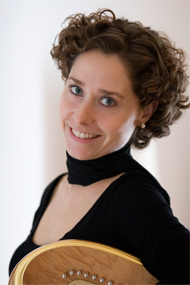

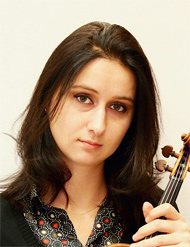
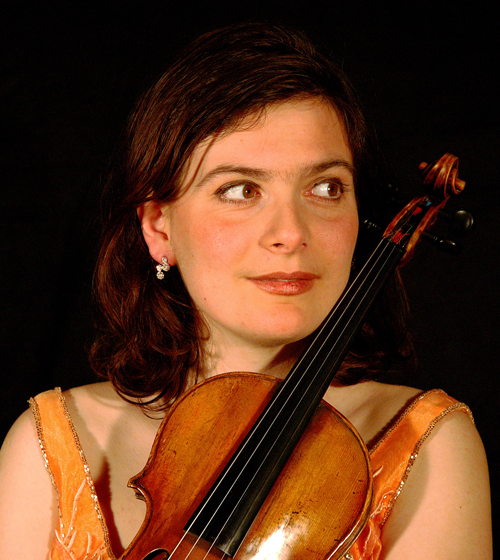
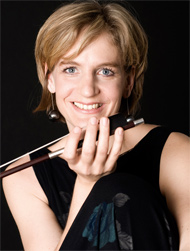
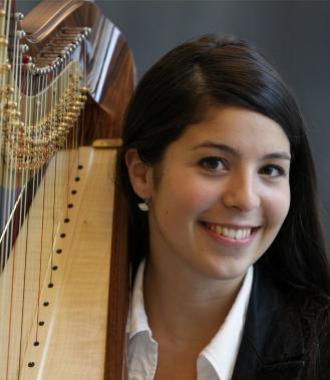
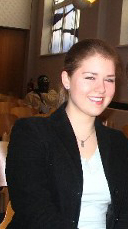
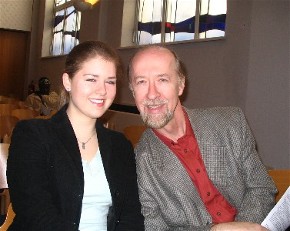 daughter
of a Philharmoniker to be hired, thus creating a father-daughter
continuum.
daughter
of a Philharmoniker to be hired, thus creating a father-daughter
continuum.